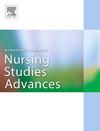Perinatal midwifery care demand in a tertiary hospital: A time-series analysis
IF 3.1
Q1 NURSING
International Journal of Nursing Studies Advances
Pub Date : 2025-01-21
DOI:10.1016/j.ijnsa.2025.100299
引用次数: 0
Abstract
Introduction
The chronic shortage of registered midwives and nurses is a serious global problem. However, current recommendations regarding midwifery staffing do not address operational staffing difficulties that arise from wide variations in care demand. The aim of this study was to describe shift-level care demand and available staffing resources in a tertiary hospital's maternity department.
Methods
This single-centre retrospective longitudinal study investigated a four-year timeframe (2019–2022). All registered midwives and nurses working a three-shift pattern in the prenatal unit, labour ward, or postnatal unit were included. To determine care demand, we approached it in a novel way, accounting for both the number of women on each unit and each case's expected complexity. Any unmet care demand was calculated in relation to pre-specified nurse-to-patient ratios for each care area by subtracting demand hours from available staff hours per shift.
Results
In total, 17,558 cases were included and 13,149 worked shifts analysed. The match of staffing resources with care demand was different for each analysed unit. In the prenatal and postnatal units, demand was generally met; however, the labour ward had a shortfall of at least one midwife on 32% of all shifts. Adjusted for care complexity, the deficiency prevalence rose to 55% of shifts for this ward.
Conclusion
Alongside the inclusion of care complexity in assessing care demand, shift- and unit-level analyses showed that average staffing numbers obscure the actual volume of unmet care demand. Staffing in labour wards needs greater flexibility to cope with the clustering of births over short periods.
求助全文
约1分钟内获得全文
求助全文
来源期刊

International Journal of Nursing Studies Advances
Nursing-General Nursing
CiteScore
5.80
自引率
0.00%
发文量
45
审稿时长
81 days
 求助内容:
求助内容: 应助结果提醒方式:
应助结果提醒方式:


